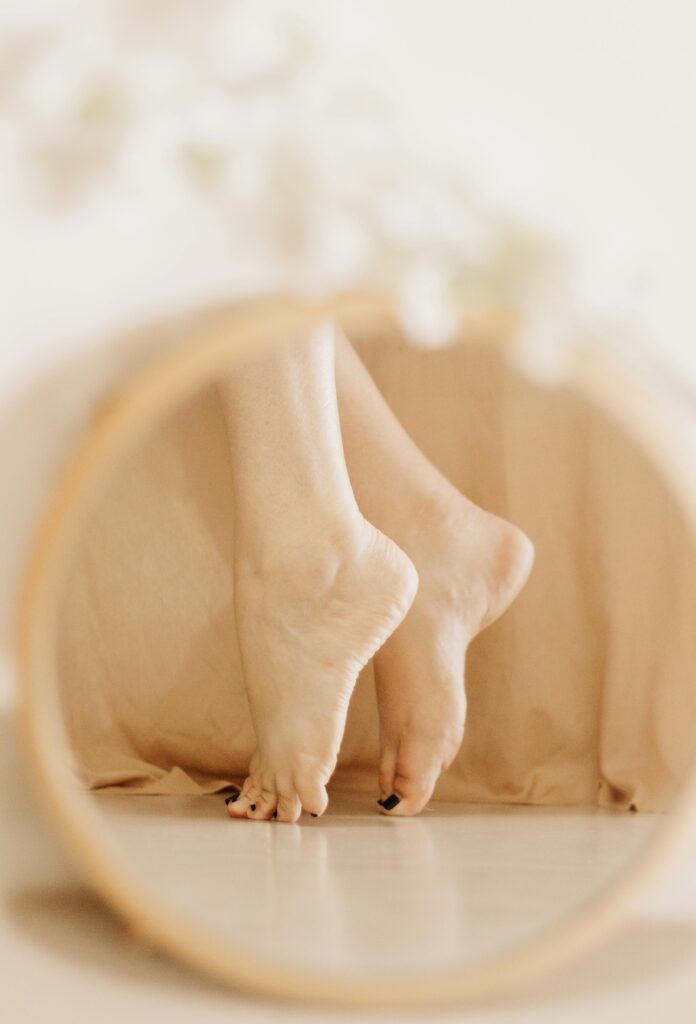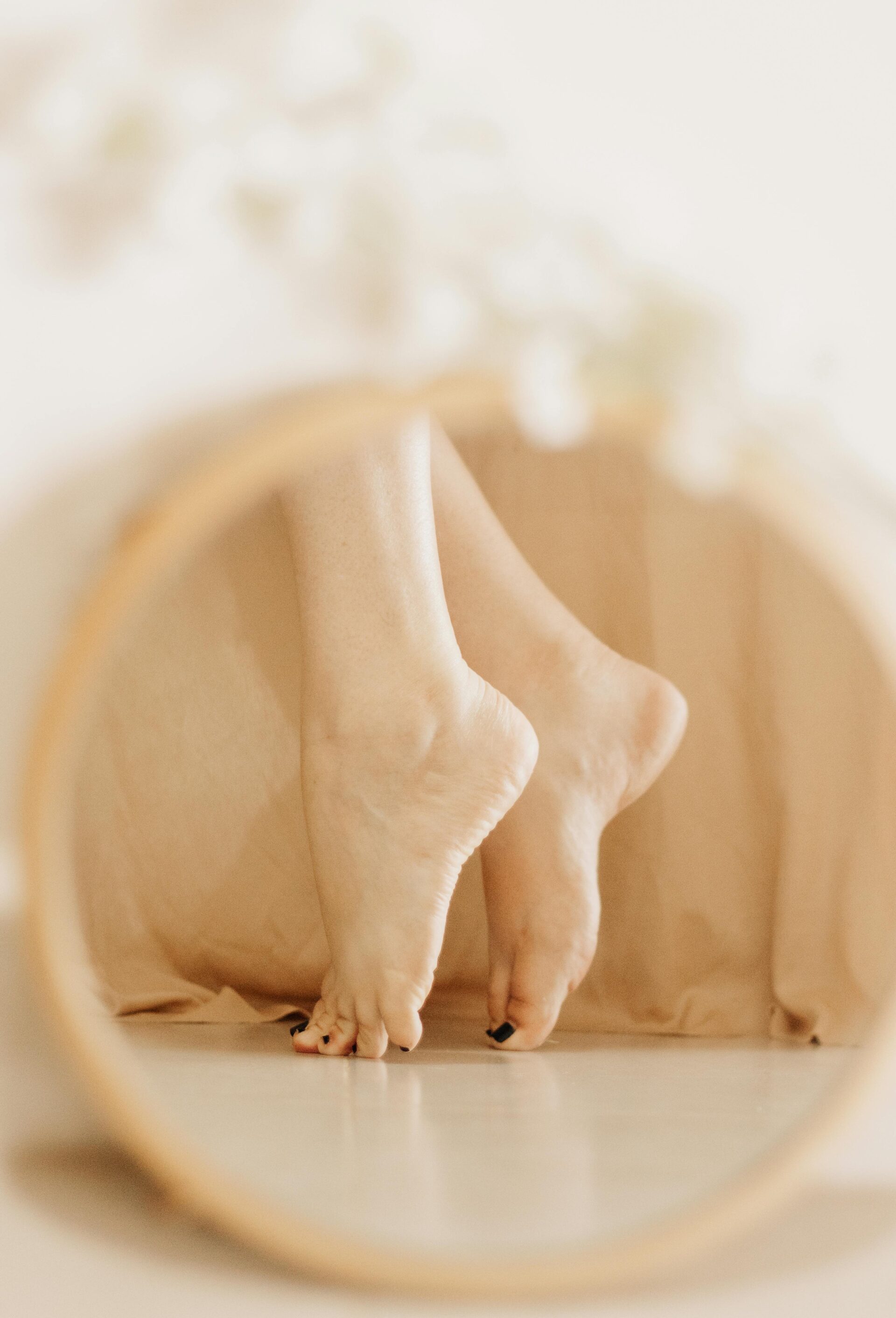What Is a Heel Spur?
A heel spur is a bony growth that pokes out between the heel and arch on the underside of the foot. On X-rays, they may appear pointy, shelf-like, or hooked. These bony growths are caused by calcium deposits.
About 15% of people experience heel spurs, which develop over time. Most people don’t even realize they have a heel spur because it doesn’t cause them any pain. It’s usually only after they seek the advice of a medical professional for heel pain that people discover they have a heel spur.
Are Heel Spurs and Plantar Fasciitis the Same Thing?
No. Heel spurs and plantar fasciitis are not the same thing, although they can happen simultaneously. While often associated with plantar fasciitis, heel spurs are not the cause of plantar fasciitis.
Plantar fasciitis happens when the plantar fascia ligament between your heel and the ball of your foot stretches or tears. We have an entire blog dedicated to plantar fasciitis that you can check out here.
Heel spurs can be a result of the inflammation and stress caused by plantar fasciitis. Your body responds to the stress of plantar fasciitis by building extra bone tissue which becomes a heel spur.

What Causes Heel Spurs?
Heel spurs aren’t something you develop overnight. They are primarily caused by activities that put extra stress on your feet and lead to calcium deposits building up on the underside of the heel bone. This extra pressure can be in the form of muscle strains, stretching of the plantar fascia, and repeated tearing of the membrane that covers the heel bone. This process usually takes months.
What else can cause heel spurs?
- Participation in sports. Especially sports like running or jogging.
- Working a job that has you on your feet all day.
- You have flat feet or high arches.
- Arthritis
- Improper footwear — Wearing shoes that lack any kind of arch support.
- Obesity
- Trauma to the heel.
- Gait abnormalities that place excessive stress on the heel bone or ligaments.
- Aging. As you age, there is decreased flexibility in your plantar fascia and thinning of the heel’s protective fat pad.
Some underlying medical conditions that may cause heel spurs are:
- Reiter’s disease
- Ankylosing spondylitis
- Diffuse idiopathic skeletal hyperostosis
Symptoms of Heel Spurs
Depending on the person, heel spurs often have no symptoms. It is usually when inflammation develops at the spot of the spur formation that people start experiencing pain. Interestingly, the cause of pain is usually not the spur itself but the soft-tissue inflammation or injury associated with it.
Some signs of heel spurs may include:
- Inflammation and swelling at the front of the heel.
- A sharp pain in your heel when you first stand in the morning.
- A dull ache in your heel throughout the rest of your day.
- A point of tenderness at the bottom of your heel. This may make it difficult for you to walk barefoot.
- A small protrusion under your heel.
If you are experiencing any of these symptoms, your podiatrist will likely want to take an X-ray of your foot to see the root cause of your pain.

How Do I Treat a Heel Spur?
So you’ve been diagnosed with a heel spur. Now what? Luckily, there are some effective non-surgical treatments for heel spurs. Your podiatrist will most likely wish to try a more conservative treatment option before suggesting any kind of surgical treatment.
Some non-surgical treatments for heel spurs may include:
- Rest — It’s important to note that rest won’t heal a bone spur. However, resting may allow the tissue surrounding the bone spur to rest and become less inflamed. Your podiatrist may recommend you use a walking boot and/or crutches for short periods.
- Custom orthotics — Orthotics can help by lessening the pressure on your plantar fascia and reducing the stress on the bone.
- Cortisone injections — These can reduce irritation, swelling, and pain in the area of your heel spur. They deliver a dose of medication directly into the problem area. Cortisone shots sometimes only provide temporary relief from your symptoms.
- Stretching
- Anti-inflammatory medication — These medications can help reduce inflammation and swelling.
- Ice — Applying ice can help reduce pain and swelling in the area.
- Physical therapy — Both gait retraining and dry needling can help with your heel spur pain.
- Night Splints
Ninety (90) percent of people relieve their heel spur pain with conservative, nonsurgical treatments. This process can take many months. It’s also important to note once a heel spur has formed, it doesn’t go away with conservative treatment. With conservative treatments, you are focussing on relieving inflammation in the area of your heel spur.
However, if conservative treatment fails to improve your symptoms surgery may be necessary to relieve your pain and improve mobility.
Some surgical options include:
- Removal of a spur — Just like it sounds, the heel spur is surgically removed!
- Release of the plantar fascia — In people who also have plantar fasciitis, the plantar fascia can be partially cut to release tension and help relieve your heel pain.
Surgery is not common for heel spurs alone. Usually, surgery is aimed at reducing pain and boosting mobility. Most people who have surgery also suffer from plantar fasciitis.
You and your podiatrist will decide if surgery is the best option for you. As with any surgical procedure, it is possible to experience complications.
How to Prevent Heel Spurs
It’s important to be paying attention to your overall foot health. Make sure you’re stretching and warming up properly before exercise. And don’t underestimate the power of rest.
Make sure you wear proper footwear for the activities you participate in. Wearing supportive shoes or having orthotics can go a long way in preventing both the development of a heel spur and plantar fasciitis.
If you’re experiencing pain after activities or you notice new pain you haven’t experienced before, it’s important to make an appointment with a podiatrist.
Podiatrists have more experience and training in diagnosing and treating foot and ankle conditions. Our Western Montana Foot and Ankle podiatrists will work with you to find the right treatment for your heel spur and get you back to doing the things you love.
